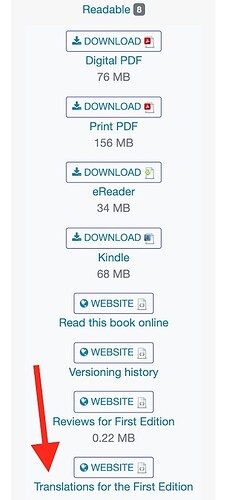As a long time web inhabitant (yikes, 28 years, how is that possible), I still like to pause and appreciate the simple hypertext links. I am always eager to discover and share things open education related, but the real joy is when it is maybe 2, 3, 5 links deep from the same stories being shared on social media.
In the grand spirit of Vannevar Bush’s concept of associative trails, here is a little journey from today.
The journey starts with today’s issue of Stephen Downes’s OLDaily. Here is another web old timer, and often I disagree with Stephen, but he does scan so many thing that with some frequency I start a trail from one of his links.
(1) Today Stephen shared a review of a paper in the International Review of Research in Open and Distributed Learning by Mohsen Keshavarz and Andrea Ghoneim, Preparing Educators to Teach in a Digital Age. The part that caught my interest was that educators in Austria at the Danube University Krems had developed a teaching approach based on Tony Bates’s SECTIONS model from his widely used open book Teaching in a Digital Age: Guidelines for Designing Teaching and Learning and it was also used for a new MOOC at Torbat Heydariyeh University in Iran.
This sounds like Global Open Education in action? The same approach for teaching using in both Austria and Iran.
(2) The paper describes the development of the MOOC in Iran on a platform used by
the Virtual University of Medical Sciences, or the ARMAN MOOC (a Farsi abbreviation for New and Massive National Computerized Education):
The ARMAN MOOCs are in Farsi, but its platform managers aim to develop the MOOC nationally and internationally. Hundreds of electronic materials are now available in the area of medical sciences and the numbers are increasing. Currently, many medical sciences universities throughout Iran are cooperating with this MOOC.
(3) I did not do well on a search to find the ARMAN MOOC, bit backtracking to a blog post by Tony Bates himself about this effort to use his work, there is the link https://arman.vums.ac.ir/
Well maybe not, the links would not load for me (and I cannot read Farsi), but there are plenty of screen shots in the IRRODL paper but the paper did have the link to the Virtual Education Center http://vec.thums.ac.ir/ Yes, I would guess that is Farsi. Google did not offer to translate, but it is noteworthy to see that URLs are represented in their local language.
(3) I was curious in the conclusion of the paper that the 2nd Edition of Teaching in a Digital Age was being translated into Farsi (and not yet German):
Parts of the first edition of Teaching in a Digital Age have been translated into Farsi and are available on the BCcampus site, while a German translation is not yet available. A Farsi translation of the second edition will be completed by the end of 2021.
(4) So I am curious to see the multilingual versions, and follow the link to the entry at the BCcampus entry in the conclusion (which is the first edition) and then follow to the second edition.
(5) On the BCcampus entry you need to toggle open the “Readable” options under Get This Book.
There are an impressive number of options!
(6) Now I am at the page in the first edition listing all of the available translations including versions of Teaching in a Digital Age in Chinese, Farsi, French, Portuguese, Spanish, Turkish, and Vietnamese. Most are PDF, but it looks like the Spanish version is available in Pressbooks form including portions in audio. The Turkish version is also online (and hosted at BCcampus).
Maybe this is just my own interest in what I call falling down the web rabbit hole, but I am always more excited when I find interesting content several clicks away from the first one I tried. This is how the web could and should work!
Does anyone else follow trails like this?
